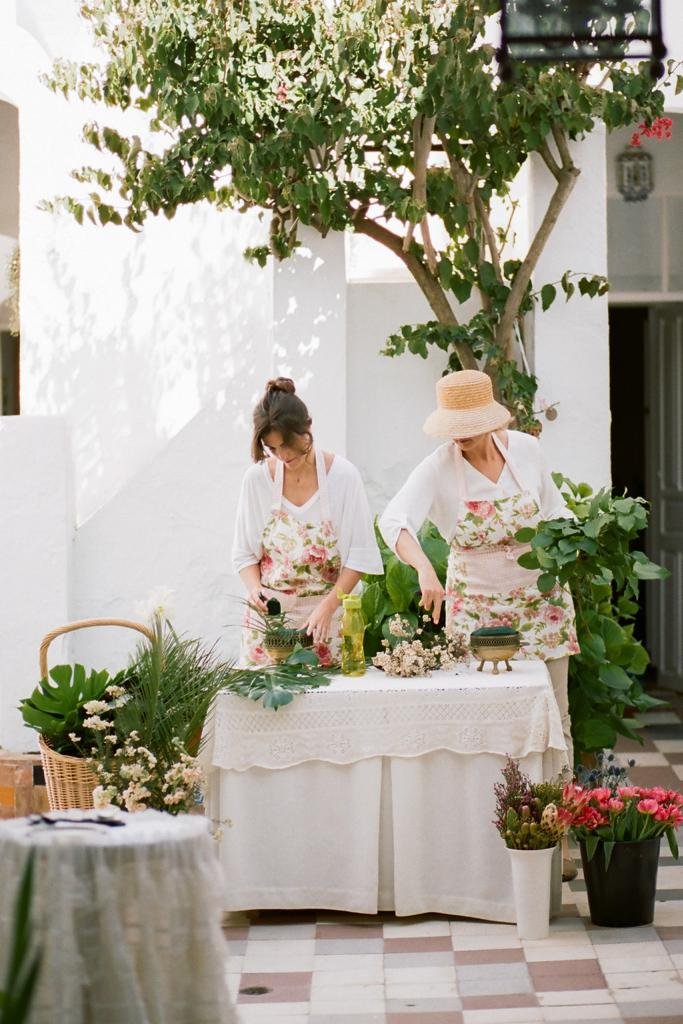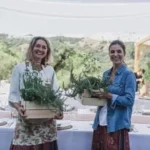Mum, I want to be a florist… If your daughter tells you she wants to train as a qualified florist, she’s got it tough. Maybe you’ve thought about it many times, or maybe it’s even crossed your mind, but do you want to be a florist in Spain? This time we are going to take the opportunity of our Cotton Candy blog to tell you what options there are if you want to train and become a qualified florist.
Training opportunities depend on where you live. In some countries in Europe you have many options such as in Germany where it is a career. Or in Argentina, for example, you can take the ‘diplomatura’ in different universities that offer training in two and three years, as well as in the Escuela Argentina de Arte Floral (Argentinean School of Floral Art). However, in our country, in Spain, there are few options within the public system and in some Spanish autonomous communities it is almost impossible. Therefore, the training you can opt for in most cases is of a private nature.
We are convinced that we have to take a stand for the sector
and defend the sector. We want it to be qualified as a profession: through vocational training, a higher degree or a career. We want the administrations to get involved and look beyond, as they have done with other sectors, such as the hotel and catering industry.
as in the case of the hotel and catering industry. The Grado Superior exists but for it you have to opt for private training, that’s why we want it to be offered within the catalogue of public training.
Florists are always placed in the artistic branch, distancing us from the professional. We are referred to art schools and this blurs our professional opportunities. Yo know flowers, although they are very artistic, are still a trade with which anyone should be able to earn a living. And this lack of concreteness means that we often have problems finding employees with training and experience.
Let us give you some specifics.
As public training there are:
1) First of all there is Vocational Training. Therefore, when you look for it you can find in some high schools the Formative Cycle of Medium Grade Technician in Gardening and Floristry -this is how it appears in the IES La Granja de Jerez-, but it is a mixture of concepts ranging from agricultural infrastructures and installations, through the implementation of gardens and green areas, to phytosanitary control…. There is only one module of three hours a week on floral art and little else.
2) Within public training, in second place are the Art Schools. In 1998 a Royal Decree 1742/1998 of 31 July 1998 was passed, establishing the title of Technician of Plastic Arts and Design in Floristry, belonging to the professional family of Floral Art, and approving the corresponding minimum teaching requirements.
In the Andalusian Autonomous Community there is a Decree 265/2003, of 23 September, which establishes the curriculum corresponding to the diploma of Plastic Arts and Design of Technician in Floristry, belonging to the professional family of Floral Art.
But where is it offered? According to the information we have gathered: in no Art School in Spain.

3) The third regulated option, which is part of public training, are the certificates of professionalism, which are offered by Employment, for which you have to sign up at an Inem office and are free of charge. Although it is expected that they will soon be transferred to Education.
And finally, there is private training, which is the option we chose to do the Grado Superior.
In conclusion, we are telling you all this because we want our profession to be taken into account, we want it to be professionalised. And we want any young person who wants to channel their future towards this sector to have sufficient opportunities to be able to train, just as, for example, cooks do, who can access hotel and catering schools. We want our profession to be qualified.

